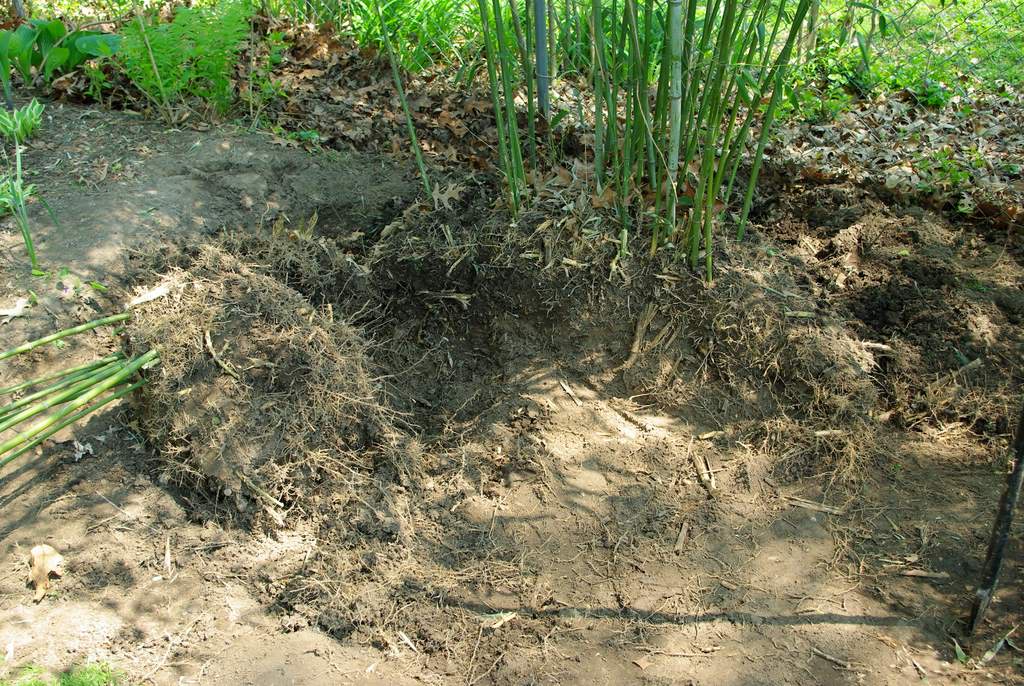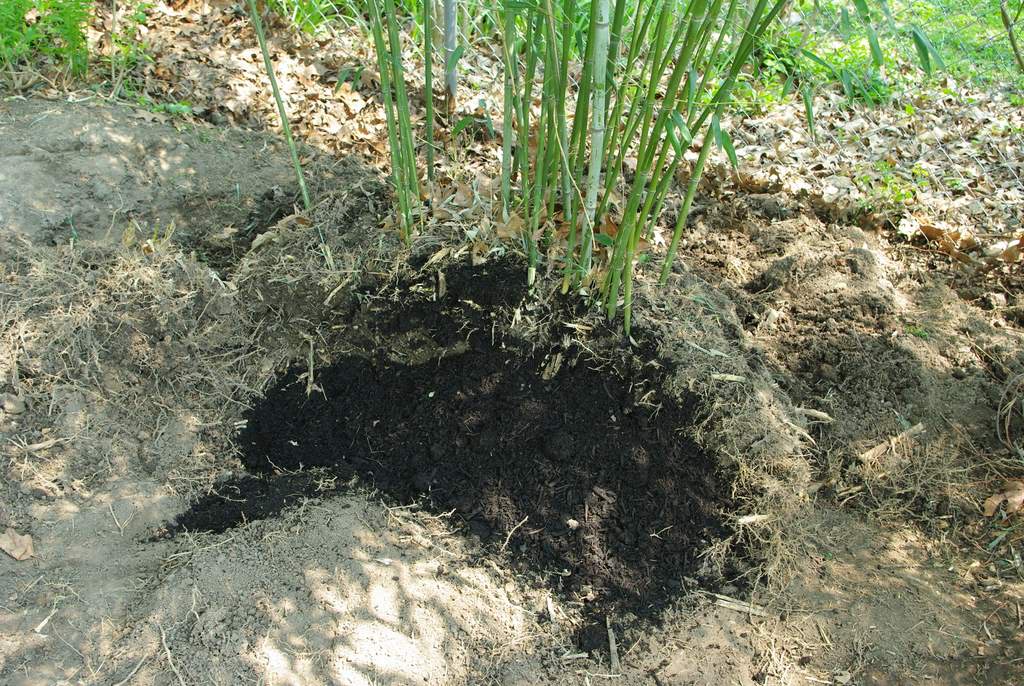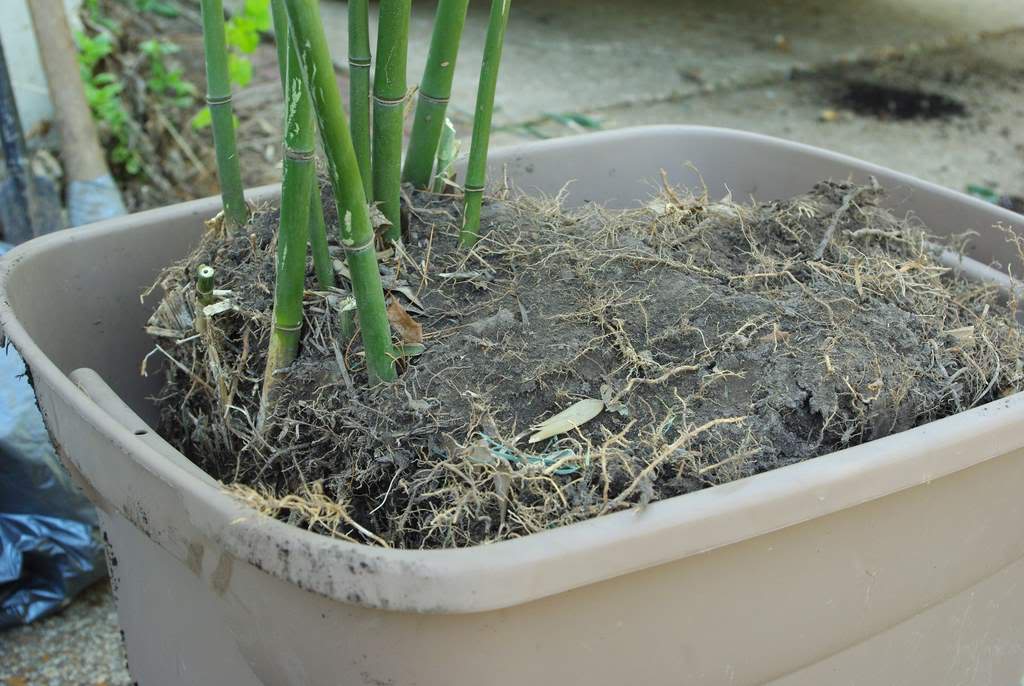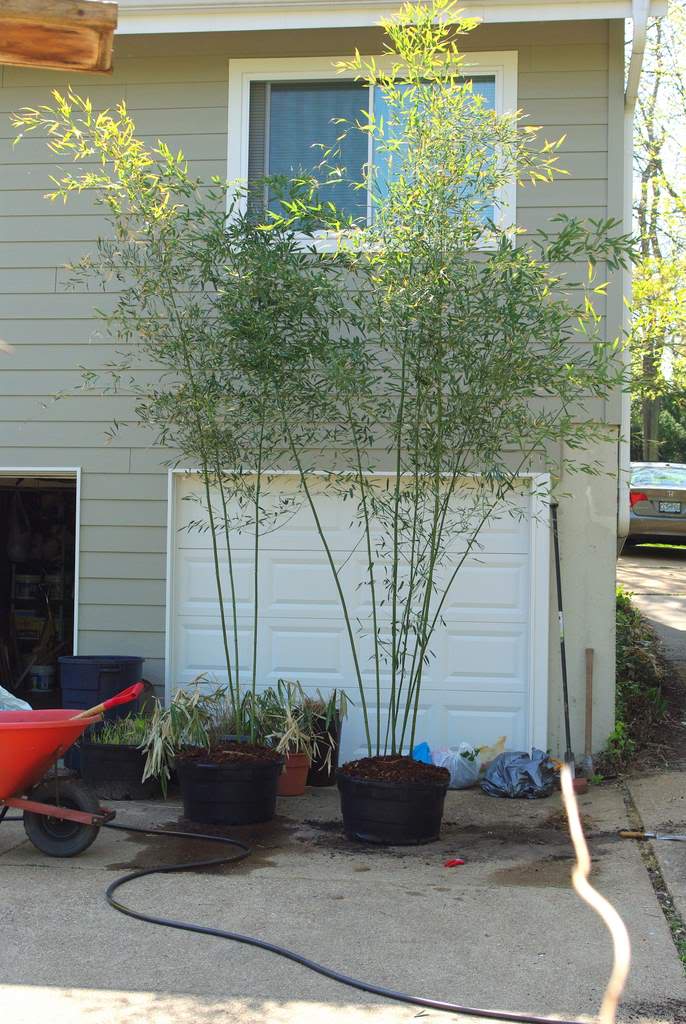Digging Bamboo
>> Sunday, April 11, 2010 –
bamboo,
bamboo division
I made a visit to my new gardening friend Michael's garden today to help him dig out a relatively mature bamboo that he wants to get rid of. Michael has a large variety of plants of all sorts in his garden, from towering Oaks and Pines to miniature Irises. He's also been growing bamboo for over 20 years. Here's the plant he wants to remove:
This is a running bamboo of the genus Phyllostachys, although we haven't identified the exact species yet. Here's a shoot that the plant is putting out right now:
For those of you who think that bamboo is an evil plant that will take over any yard it's planted in, this plant and the other bamboos in Michael's garden are a great example of how a well-maintained and controlled bamboo can be a beautiful garden plant.
Michael's control method involves planting on mounds of soil, and trenching around the plants. Then a couple of times a year he checks the trenches for escaping rhizomes and cuts them off. It works quite well for him, although it does involve a fair amount of work. Running bamboo is not a plant for the lazy gardener, unless it's grown in pots.
Before I arrived Michael had removed several of the culms and had started dividing the plant into quarters.
He wanted me to take the front two quarters with me today, so my job was to continue chopping through the thick layer of rhizomes until each section is free. We used a heavy digging bar and a mattock, and after quite a bit of effort and time got the first division removed.
The second division was a little easier since we had better access, but this is still hard work. I've heard of other bamboo growers using reciprocating saws with 12" demolition blades, or even chainsaws to cut through the rhizomes, and I think I may try those methods the next time.
So that's the remaining half of the plant, with some compost dumped on the now-empty half.
I was at Michael's for over two hours, but we spent some of that time looking at his garden, talking about bamboo and other plants, and resting, so I think the actual digging time was probably an hour or so.
After loading up the truck I drove home and started potting the new divisions up.I probably should have wrapped the foliage in plastic to help prevent them from drying out, but the drive wasn't too long, and it wasnt' too hot today, so I chanced it.
The rootballs were quite large, and the first one just barely fit in the 20 gallon "squat" nursery pots that I have. I had to jam potting mix all around and under the rootball, but there are no photos of this process since my hands were completely covered in soil and stopping to wash them so I could grab the camera seemed like too much effort.
This one filled the pot a little too much:
I normally want the soil level to be a little below the rim of the pot (to make watering easier) but it just wasn't possible in this case. The second plant we somehow cut into almost the exact shape and size needed to fit in this tub that I brought some tools in:
This was completely by accident, but was a good accident because having the plant in the tub made it much easier to move and lift. I've planted bamboos in these tubs before after drilling some drainage holes in them, but I think I'd rather move this one to another 20 gallon squat pot since that pot has a bit more room for growth than the tub does. It's not quite as tall as the tub though, so I need to chop off a little more of the bottom of the rootball.
That's a decent fit, so time to ruin the fingernails again with more jamming of potting mix under and around the rootball. Again, unphotographed. You can see where some of the culms got scratched from the tools we were using. This won't hurt the plant, but makes the culms a little less attractive. Hard to avoid though.
Even though there's really not room for it I still topped it off with some pine bark mulch to preserve moisture and make it look nice:
And we're all finished:
It's pretty shocking to look out of that window and see leaves at eye level! It's a convenient way to see how the plants are doing though and if they need water though. I''ll keep an eye on the remaining leaves over the next couple of days and if I see much curling (which is what bamboo leaves do to tell you they need water) I may have to remove some of the branches or "top" the culms -- which means cut off some portion of the top of the culm. I want to avoid topping though, as it doesn't look as good. It's better than a dead culm though, so it may be necessary.
I should probably move the plants in the morning to a shadier spot. Although they're in shade right now they'll get full sun where they are in the morning until about 1:00, and it's better to keep them in shade for a few days so they lose less moisture.
Did I mention that I'm not really sure what I'll do with these plants yet? They'll probably only be able to grow in those pots for a single year, or maybe two, and then I'll have to decide what to do with them. (Hopefully I'll have them identified by then!)


















This bamboo has been identified as Phyllostachys bissetii.